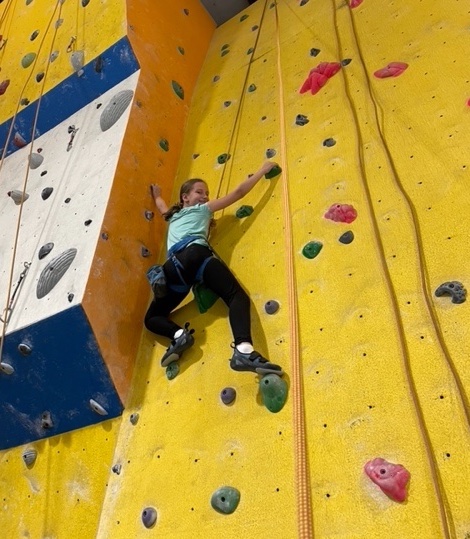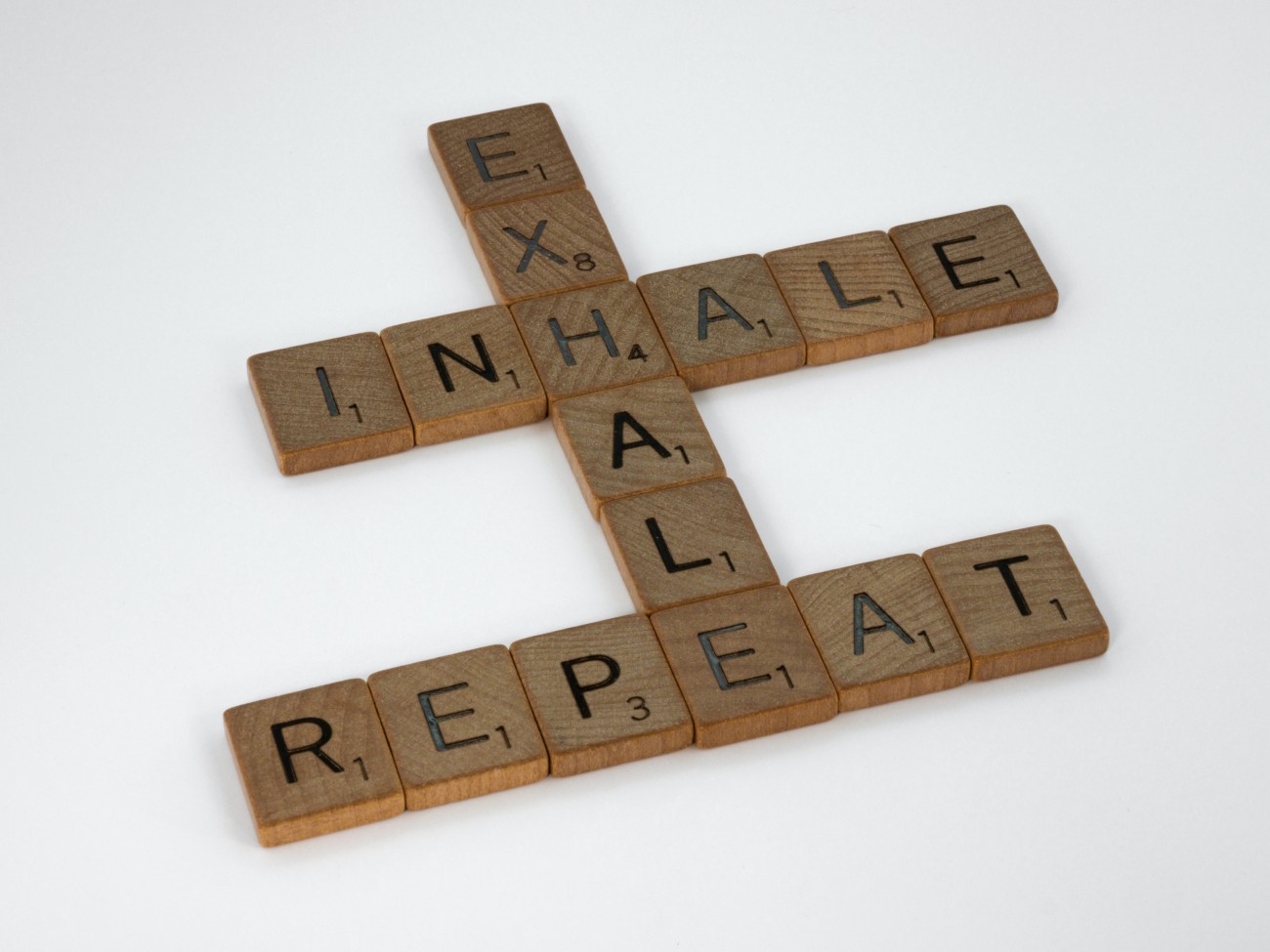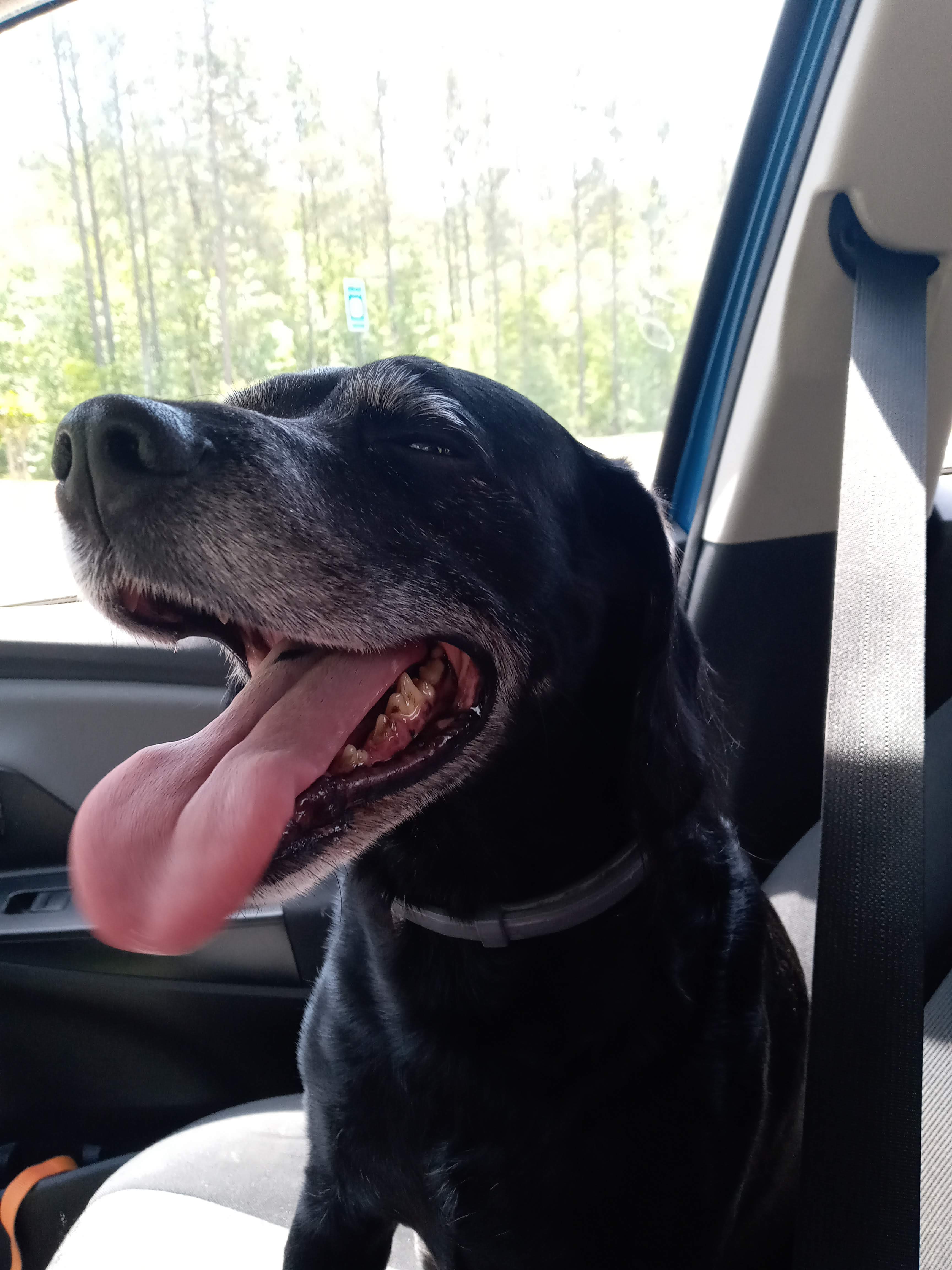Blog : Lifestyle
Strengthen Students’ Health over the Summer
Summer break is an opportunity for college kids to rejuvenate themselves. With all the demands throughout the school year - class schedules, long study periods and full social lives, compounded by being away from families - they often neglect their health until they hit a point of "crash and burn."
A lot of high school students also fall victim to similar stresses on their well-being. They become exhausted and their metnal and emotional health can be affected.
This summer, take the opportunity to help students prepare for the upcoming school year. They're at home and their schedules are more flexible. That makes it a good time to get them in for an appointment at Red Earth Acupuncture.
David Toone noted that many college students often struggle with the transition from living at home to being away to college, and that takes a toll on their health.
"This is a chance to take advantage of their age and resilience," he said. "Young people tend to make good, fast progress. We can get them 'patched up' and strengthen their immune systems to keep them strong through the next term."
He added that he'd had great success working with young adults during their summer breaks. "It's super fun to work with them, see them get healthy and ready to go back to school."
Survive and Thrive this Summer
Keep your health on track and moving forward through the Fire Season.
Summer is the Fire Season. It's a time of lush growth, brightness and activity. Quite often, it's also a time of unwelcomed extreme heat - particularly in the South.
In nature, extreme heat withers and dries crops. It brings drought and blazing forest fires. We, too, can overheat during the summer months and experience harmful side effects.
Staying safe and comfortable in the hot summer can be a challenge. In the age of air conditioning and iced drinks, you'd think keeping cool would be easier. But how did out ancestors stay cool in the summer long before modern refrigeration?
How the body copes
In summer, while it's hot outside, our body keeps heat near its surface. Why? To allow the heat to vent outward, which prevents us from overheating.
To perform this cooling function, the body increases blood flow to the capillaries at the surface of the skin. The increased blood flow opens the pores of the skin. Water in the form of sweat then releases and evaporates. As this evaporation occurs, the surface of the body cools off.
In the winter, our primary goal is to preserve our heat. When it's cold outside, our body stores as much heat as far from the surface as possible. During the cold season, more of our heat is in the center of our body.
The role of the circulatory and digestive systems
Our warm blood circulating is responsible for heating and cooling the body. The body's heater and air conditioner are controlled by the body's ability to generate heat.
As we pointed out, in the warm months most of the body's heat is at the surface. This means the middle of the body, and especially our digestive system, has less heat. If the digestive loses too much heat it won't operate properly.
In the clinic, we see that people prone to difestive problems are much more likely to have loose bowel movements and bloating in the summer months. The digestive system is an engine. Just like the engine in our car, it must remain at operating temperature to work effciently.
When the digestive engine isn't working well, it can't generate the blood necessary to operate the heating and cooling mechanism. When this happens, the pores close and heat builds up underneath the skin. This causes heat vexation and is very uncomfortable.
How do we deal with this? Ingest more foods that warm the middle and prevent heat building up at the surface.
Top 10 tips to keep your cool during the Fire Season
1. Use spicy, pungent herbs and spices. Food such as hot peppers, fresh ginger and horseradish as well as spices - like cumin, coriander, cinnamon, nutmeg, and turmeric - help warm the center and allow the body to bring the heat to the surface. In moderation, these foods disperse heat, but too much and you'll sweat profusely. You want to avoid that. A light sweat will help to cool the body, but heavy sweating creates fluid loss.
2. Water balances Fire. Be sure to drink plenty of fluids during the summer, especially if you sweat a lot. With profuse sweating, you may also need to replace electrolytes. Good sources are coconut water (the unsweetened kind), water with cucumbers or fresh watermelon juice.
3. Eat light and simple. Prepare recipes using a few ingredients rather than heavy meals. Limit thick, heavy, creamy dishes that have an excess of meat, eggs and dairy. Too much of these foods are harder to metabolize in the colder digestive system of summer.
4. Eat seasonally. Visit your local farmers markets to see what is in season. Focus on including those ingredients in your meals. We have great farmers markets in the area, so be sure to check them out. Here are a few:
- Alō Farms - alofarms.com
- Peachtree City Farmers Market - peachtreecitymarket.com
- Newnan Market Day - mainstreetnewnan.com/p/events/the-market-day
- Senoia Farmers Market - facebook.com/senoiafarmersmarket/
5. Choose bright colored vegetables and fruits. Steam or lightly simmer vegetables and go easy on the salt. Remember that raw vegetables are even harder to digest in the summer, so don't overdo it with cold and raw foods. They weaken the digestive system.
6. Eat cool fresh foods. On hot days, choose foods such as:
- Sprouts and mung beans.
- Cucumbers and watermelon to hydrate and moisten.
- Mushrooms to improve fluid balance and calm the nerves.
- Celery and lettuces to strengthen nerves and heart tissue. Celery can also help to lower blood pressure.
- Mulberries, lemons and limes to calm the mind.
- Greens - the bitter flavors cleanse the heart and arteries and cool an overheated heart. Greens also help to control anxiety.
7. Learn the make summer pickles. Instead of eating so many raw foods, learn to prepare delicious summer veggies the traditional way. Check out "How to Quick Pickle Any Vegetable" at www.thekitchn.com for easy instructions.
8. Don't overdo it on the cold foods. Iced drinks, ice cream and frozen treats can weaken the digestive system. This holds in sweat and heat, which contracts the stomach and inhibits digestion.
9. Limit coffee, alcohol and tobacco. These substances create heat by weakening the blood's ability to turn on the body's cooling system.
10. Rise early. Work, play, travel, grow. Be active during the day and cool down at night. Turn your electronic devices off by late evening. Try getting to bed by 10 p.m. to get a good night's sleep.
Most of all, enjoy all of the life that summer brings!
Fun Facts about the Summer Solstice
- The 2023 North American summer solstice happens on Wednesday June 21 at 10:58 a.m. EDT
- Summer solstice is the very moment that the sun stands still at its northernmost point as seen from Earth.
- It's the day that marks the official beginning of summer in the Northern Hemisphere.
- It's also the day of the year with the most sunlight, the longest of the the long summer days.
- It occurs at the same time all over the world.
- On the day of the June solstice, the Northern Hemisphere receives sunlight at the most direct angle of the year.
- If you look at your noontime shadow on the day of the solstice, it's your shortest noontime shadow of the year.
- At the Sun's northernmost point in the sky, it pauses for a brief second at the Tropic of Cancer before it appears to switch direction and head south again.
- The word solstice comes from the Latin: "solstitium", sol (sun), and "stitium", (to stop).
- Summer Solstice is the most yang - light, masculine - energy day of the year.
- It can occur anywhere from June 20 to June 22, but June 22 solstices are rare.
- It's the only day that all locations inside the Artic Circle experience 24 hours of solid daylight.
- The summer solstice is traditionally celebrated all over the world with festivals, bonfires, signing and dancing.
Indoor Rock Climbing
An important part of your health journey is movement, and the way you travel along your path to wellness is as individual as you are. There are many ways to get and stay active. Try some new fitness options until you find one or more that you enjoy.
One way to get exercise is through rock climbing. You don’t need to scale a treacherous peak, as several indoor rock-climbing gyms can be found in the metro Atlanta area.
The gyms have guides on staff to help climbers get tethered correctly. They also teach and share advice on how to get up and down the rock wall.
David Toone has enjoyed indoor rock climbing since 2020 when his son Ethan got him into it. “It was something we could do together,” David said. Now, his daughter Elise joins him at the rock wall.

He explained that rock climbing is a micro-burst of activity, an intense workout for a short period of time. “I can swing by after work and do it for 15 minutes to half an hour. It’s quick and efficient.”
Indoor rock climbing increases balance and heart health, and it strengthens and rehabilitates muscles. David noted that the exercise involves a lot of stretching.
“Muscles and tendons get stretched and that can allow tendons and joints to reset,” he said. “It improves hand strength, too.”
Indoor rock climbing can also help with overcoming a fear of heights, David noted. “And it’s good for body awareness. You get good at it by being technical, not from strength. You build your strength.”
The rock wall is also a good activity for kids. According to David, rock climbing helps children build stronger muscle and tendon groups that will stay strong throughout their lives.
He suggests that anyone willing should give indoor rock climbing a try. “It’s not just for smaller, more muscular people. It’s a power to weight ratio activity,” he said.
But he stressed that it’s also a slow start activity.
“If you’re willing to keep coming back, you’ll eventually go higher and higher. I recommend this for anyone who is too stubborn to give up,” David said.
He added that he likes the fact that he’s doing and enjoying something that he’ll never be good at.
“It’s good for my humility,” David stated. “Another thing I like is that climbers don’t seem at all ‘judge-y’ and are very supportive of all levels and abilities. I’m proof of that!”

Area Rock Climbing Gyms
Escalade Rock Climbing — Peachtree City
The Overlook — Atlanta West End
Stone Summit — Doraville
Following the Breath
Breathing is natural for us. We learn it at birth, but throughout our lives, most of us “unlearn” how to breath correctly.
We tend to breath in our chest. When we do that, the diaphragm doesn’t rise and fall, as it does when we breath naturally.
The movement of the diaphragm is important. It “massages” our vagus nerve. That, in turn, activates our parasympathetic nervous system, takes us out of “fight-or-flight” mode, which allows our body to rest and repair.
It’s not hard to get back to natural breathing, and so, get back to a more healthful and relaxed state. It just takes time and frequent practice.
What to do
Throughout the next month, observe your breath. Don’t try to control or change it. Just become aware of how you’re breathing. Notice what’s happening in your body.
Spend a few minutes every day simply watching yourself breathe. You don’t have to set aside a special time. You can do it while you’re sitting, meditating or even just waiting in the car for someone.
There are structured breathing programs available, but sometimes, if you try to force the breath, your body may reject it, causing more anxiety, not less. You could hyperventilate.
Next month, we’ll continue this on this path and discuss how to gently alter your breathing pattern to bring it back to its natural state.
Where to look
To learn more, check out “The One-Minute Meditator” by Bill Birchard.
Newnan’s LINC
Many who visit our clinic ask for ways to strengthen their health and wellness. Some are looking to lose weight, some looking to get more active, and some looking to relieve stress.
Walking and getting out in nature have been found to have a very positive impact on physical and mental health. So, we're exploring all the different local walking trails one by one and letting you know about them. This month, we're in Newnan looking at a newer trail.
How many steps a day?
 One question I ran into as while walking more and one that I’m sure you came to is: how much movement do I need to do daily? It’s common to hear 10,000 steps a day, but the conclusion that I found is as simple and complex as just saying more.
One question I ran into as while walking more and one that I’m sure you came to is: how much movement do I need to do daily? It’s common to hear 10,000 steps a day, but the conclusion that I found is as simple and complex as just saying more.
This all depends on where you’re in your health journey, but take the average number of steps you walk in a day and increase it. For example, if you walk 3,000 steps a day work on a goal of 4,500 steps a day. As your body gets used to that increase, you’ll find it possible to take even more steps or to increase the speed. Saying 10,000 steps is a nice number for people to give (along with other phrases like, “drink 8 glasses of water.”), but giving people the standard advice doesn’t really work because there isn’t a standard person. One person’s first marathon could simply be walking to the mailbox and back. So, figure out where you’re at in your process, decide where you want to be, and work on a plan to get there. Everyone at Red Earth will be here to help you along that journey.
How Can Just Breathing Help Me?

Last month, we talked about most people don't recognize the changes in their breathing and how those changes happen over time (You can find that article HERE). This time around, let's talk about the why and how breathwork helps.
Exploring Brown’s Mill
Last month, I covered Line Creek in Peachtree City. This month, I’m going to talk about the trails Samhain and I used while getting into a walking schedule-Brown’s Mill Battlefield in Newnan, GA.
Walking Line Creek
In the clinic, there are three components to restoring your body’s ability to heal: acupuncture, herbs, and lifestyle. Two of these components- Acupuncture and Herbs- are available to everybody and discussed regularly. The third component, except for nutrition, has been left to the side, out of the larger discussion. However, it’s super important and filled with so many fascinating nuances that it’s high time to bring it into the conversation.
Lifestyle is the portion that you can control and has a great effect on the success of the other two. It’s not just about nutrition, it’s about  movement, managing stress, and balancing your life.
movement, managing stress, and balancing your life.
A regular component of the newsletter has been about recipes, and those are not going away, but I want to introduce a second component: movement with my special guest Samhain (Sow-en).
The Ins and Outs of Breathing
Breathing. It's something we're always doing. We rarely, if ever, even think about it. What if I told you that we’re getting it all mixed up?
Try this out to see what I mean:
Take a breath in. Now breathe out. Are your shoulders going up with the breath in and down with the breath out? Does your stomach stay still? That's the breathing that most people do on a daily basis, called vertical breathing or shallow breathing.
To get a better idea of how breathing should be, try this:
Sit up tall, shoulders back. Breathe in for 4 seconds. Hold for 4 seconds. Exhale 4 seconds. Hold for 4 seconds. Repeat for as long as you want. Use the GIF below if you need a visualization

Do you feel your stomach expand and contract with the breath? That's the breath fully filling your lungs. This is the breathing we did as babies/ toddlers and, as long as there are no specific issues, this is how we breathe when we sleep. So, if this is the way the body is supposed to work, why don't we breathe like that all the time?
Well, it started with going to school.
